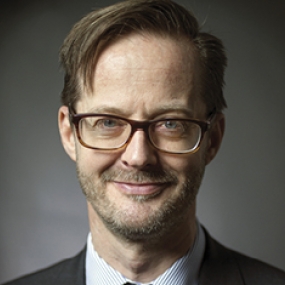The workforce challenges facing anaesthesia

Consultant Anaesthetist, England Representative for the RCoA Workforce Strategy Committee, Chair, RCoA Clinical Directors’ National Executive Committee
Anaesthesia demand is outgrowing the supply of anaesthetists. In 2015, the Centre for Workforce Intelligence’s (CfWI) in-depth review of anaesthesia and intensive care medicine (ICM) reported that the demand for anaesthesia and ICM services is likely to exceed supply over the next 20 years.
The College’s 2015 workforce census corroborates the CfWI’s findings, emphasising the urgent need for growth in consultant and SAS supply, both to meet current service requirements and to accommodate projected growth.
College anaesthesia recruitment surveys of clinical directors in 2017 and 2018 found that the average consultant vacancy rate in anaesthesia departments was 5.2 per cent and 6.9 per cent respectively, a steady increase from the 4.4 per cent rate reported in the College’s workforce census in 2015.
This evolving staff shortage is striking, but perhaps not surprising. Analysis of the workforce age profile from the 2015 census shows that 95 per cent of anaesthetists retire at or before their 60th birthday. From the same data we can calculate that an average of 280 anaesthetists will retire each year over the next 20 years.
In addition to the number of anaesthetists retiring we’ll need to train additional anaesthetists to meet increasing demand. Historically, demand has increased at a rate of approximately 2-3 per cent, which would require an additional 150-220 new anaesthetists. However, this may be an underestimate and the CfWI predicted that growth will be around 4.7 per cent, which equates to another 370 anaesthetists per year. If we combine this with the 280 anaesthetists retiring, then we’ll need approximately 430-650 new anaesthetists per year.
From 2008 to 2018 an average of 442 trainees gained their CCT in anaesthesia. This number is likely to fall as from 2012 to 2018, the number of anaesthetists in training fell by 6.5 per cent. It’s easy to see that the current workforce gap of more than 400 unfilled consultant anaesthetist posts will keep growing. If the CfWI is correct, and they have the best available information, this would leave us with a workforce deficit of an additional 200 anaesthetists per year. Will your clinical director allow you to develop new roles if there aren’t enough anaesthetists to staff even the basic work in theatres?
Work around morale and wellbeing of anaesthetists in training and at consultant level is therefore extremely important. Survey results and listening events in this area are supported by a number of recommendations to improve the working lives of anaesthetists in training, including to plan, recruit and retain an adequate anaesthetic workforce. At the other end of their careers, we need to develop jobs that enable colleagues to stay at work for longer before retiring.
For those with an interest, and that should be all of us, the RCoA Workforce Data Pack 2018 provides an analysis of the pressures and issues within our specialty. It offers recommendations and summarises evidence that supports the College’s case to increase core/ACCS (anaesthesia) and specialty training supply. Accessible and transparent information such as this will help to bring the issues to the forefront of the healthcare agenda.
If you would like to contribute to the workforce debate then please get in touch by email: workforce@rcoa.ac.uk
Dr Hamish McLure
